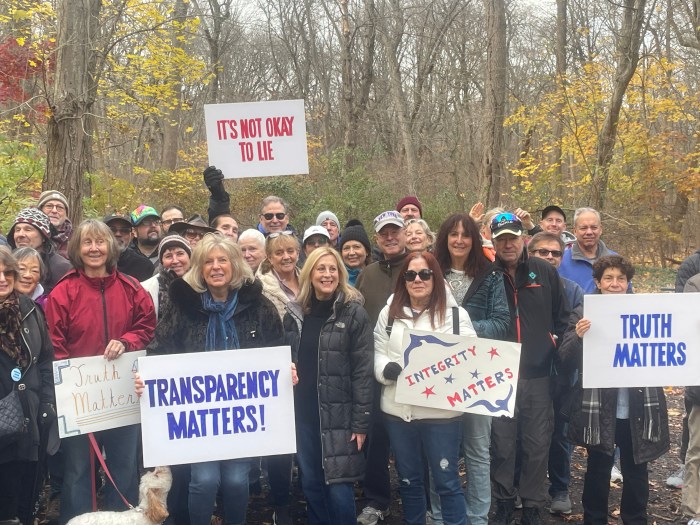As New York confronts rising energy demand and increasingly stressed transmission corridors, a new report from the state’s grid operator warns that the downstate region is on track to face significant reliability shortfalls within the next several years.
Industry representatives say these concerns underscore the need for major transmission upgrades, including the Propel NY Energy project.
The New York Independent System Operator released its “Short-Term Assessment of Reliability” on Oct. 14, outlining conditions on the state’s electric grid over the next five years. The assessment identifies mounting reliability risks in New York City beginning in 2025, on Long Island by 2027, and in the Lower Hudson Valley by 2028.
According to the NYISO report, rising electricity consumption, driven by expanding electrification of home heating and transportation, as well as rapid development of large data centers and microchip facilities, is outpacing the region’s ability to move power across the grid efficiently. Congested transmission lines in southeastern New York have limited the flow of electricity into high-demand areas, especially during extreme heat, winter storms and peak-load periods.
NYISO’s findings highlight “limited transmission capability” as a major factor contributing to these projected shortfalls and directly identify the proposed Propel NY Energy transmission line as a key infrastructure project expected to “dramatically improve reliability” once placed in service.
Propel NY Energy is a joint venture of NYPA and New York Transco, with WSP serving as the project’s engineer of record. The project would install six new 345-kilovolt transmission lines and one 138-kilovolt line, connecting Long Island to New York City and Westchester through both underground routes and a nine-mile submarine cable beneath the Long Island Sound.
Once complete, the system would create five high-voltage interconnections between Long Island and the statewide grid, up from just two today. Marykate Guilfoyle, a representative from Propel NY Energy, said this redundancy is crucial for storm resilience and year-round reliability.
The project was selected in 2023 through a competitive state bidding process initiated after the Public Service Commission identified significant congestion “bottlenecks” in the downstate transmission network.
According to Guilfoyle, the project was chosen not only for its technical approach but also for being “the most cost-effective solution” among the proposals submitted.
Propel NY Energy must still complete the state’s Article 7 permitting process, along with securing approvals from the U.S. Army Corps of Engineers, state transportation agencies and multiple local municipalities. If approved on schedule, construction could begin in mid-2026 and finish by May 2030.
The briefing also referenced a recent national report by Grid Strategies, which analyzed the economic value of transmission upgrades. The report found that for every $1 billion in delayed transmission, consumers lose between $150 million and $370 million per year in benefits due to congestion, higher energy costs and reduced reliability.
“When we delay projects, we’re not only looking at adding costs to these projects further down the line, but we’re talking about risking the reliability of our electric grid and making sure that the lights can stay on through winter storms, hurricanes, extreme heat waves, like we saw this summer on Long Island,” said Guilfoyle.
Delays would also postpone construction jobs, hotel and restaurant spending by work crews and procurement from local businesses — benefits the project team emphasized as part of their outreach efforts.
In Nassau County, preferred routing has already been identified for several segments. Susan Craig, director, communications and external affairs for New York Power Authority, said routes have evolved from the original July 2024 filing following months of surveying, community meetings and municipal input.
Some adjustments were minor, but others shifted entire segments onto different roads to reduce traffic impacts, avoid dense areas or incorporate resident feedback. In New Rochelle, the project team said they eliminated an entire above-ground station after exploring alternatives with local officials.
Residents previously raised concerns at public hearings in Mineola regarding construction disruption, electromagnetic fields and health effects. Project representatives said some of those statements contained misinformation.
“Some of the facts at the hearings were simply inaccurate — especially around the safety of underground lines and the need for the project,” said Shannon Baxevanis, director of communications and public affairs at New York Transco.
Propel NY Energy plans to rely primarily on trenching, moving between 50 and 100 feet per day, though officials emphasized that no single location would see long-term disruption.
Sensitive areas, including the Long Island Rail Road corridor, river crossings and the shoreline, will use horizontal directional drilling, a trenchless method designed to minimize surface disruption.
The nine-mile submarine cable across the Long Island Sound will be installed using jet-plowing technology that buries the cable beneath the seabed while minimizing environmental impact.
NYISO’s report cautions that supply margins are tightening quickly, noting that this summer’s heat waves pushed downstate demand close to capacity limits.
“It’s real, it’s here, and 2027 is not far away,” Baxevanis said. “Transmission upgrades are essential to keeping the lights on.”
Propel NY Energy’s development team says they will continue holding open houses, webinars and business-impact surveys as the project advances. Their next public webinar, focused on marine construction and environmental safeguards, is scheduled for Dec. 10.

































